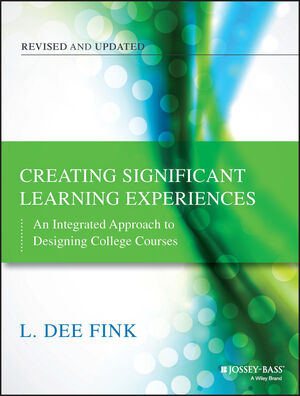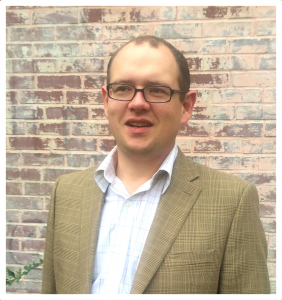Today, I introduce Fred Baker, an instructional designer at the University of Tampa. We have a common interest in openness in higher education, and I recently learned that he took a compelling approach to faculty development. Because we are in the process of designing an onboarding and development program for our faculty, I wanted to learn more about what he did.
 The project was originally conceived of as a studio learning experience in which faculty would read and discuss L. Dee Fink’s Creating Significant Learning Experiences, then create tools and course components based on principles from the text, receiving feedback from peers along the way. In consideration of the busy schedules of most faculty, the experience was divided into two phases, with Phase I focused on reading and discussing the book and Phase II being the hands-on portion. Intrigued by the idea of offering something like this for our faculty, I was eager to learn from Fred about the logistics involved, and about how things went. His answers to my questions were enlightening and encouraging so I wanted to share a bit of that interview with you.
The project was originally conceived of as a studio learning experience in which faculty would read and discuss L. Dee Fink’s Creating Significant Learning Experiences, then create tools and course components based on principles from the text, receiving feedback from peers along the way. In consideration of the busy schedules of most faculty, the experience was divided into two phases, with Phase I focused on reading and discussing the book and Phase II being the hands-on portion. Intrigued by the idea of offering something like this for our faculty, I was eager to learn from Fred about the logistics involved, and about how things went. His answers to my questions were enlightening and encouraging so I wanted to share a bit of that interview with you.
Why did you choose to use this approach?
I am a huge proponent of the studio model. It is a teaching model that works well with social constructivist learning perspectives and has been used traditionally in open education learning environments. The essential idea is that each member creates something, gets feedback on it, and then revises it. The studio model is my preferred teaching style, and I have had great experiences participating in studios in the past. For me, it just makes sense.

Did you provide discussion questions ahead of time or leave it up to participants?
I moderated the discussion and prepared my own questions in case there wasn’t much discussion, but I focused primarily on letting everyone else speak from their experiences. I participated in one of Dee Fink’s workshops a year or two before creating the studio, and the book topic covers Instructional Design & Development, the broad area of my PhD, so I felt very comfortable being able to pitch in impromptu wherever things got bumpy.
Overall, how did it go?
We got rave reviews from participants. The most commonly cited benefit was the interaction with faculty in other departments and colleges. I do wish that we had more time. It was a side project that I was interested in creating, but wasn’t a direct element of my job, and the faculty were very limited on the time they could commit as well. When I do it again, I will try to extend the time and pre-warn every one of the need to set aside some real time.
So participants appreciated the format?
They did appreciate the format. We have a lot of trouble with setting up times that work because we don’t have a common free time for faculty here. The sessions we had were 45 minutes, and there were several comments about increasing this to 75 minutes and trying various models of hands-on participation. In the meetings, everyone got to participate and discuss relevant areas, in part because I didn’t have a predetermined agenda (just questions to fill the gap in case there was a lull in the conversation). This way, faculty were able to discuss how the ideas in the book applied to their own teaching. There was a lot of push for the hands-on portion to follow during a slower semester.
How consistent was participation throughout the semester?
Most participants made it to most of the meetings, but there were a few who didn’t come to many. We had about 14 participants, so, at any point in time, several people could be absent without it impacting the group dynamic. We also gave them the book as a gift for participating in the studio, and that, combined with the usefulness of the content and enriching discussions, gave them some incentive.
I know you haven’t implemented Phase II, yet, but how do you visualize that piece?
Phase II is the hands-on portion of the studio. Originally, the idea was to build all of the hands-on components into the main studio, but limits on time for the participants led to a follow-up session that was more hands-on. The requirements for participating in Phase II are that you participated in Phase I and have a course that you would like to redesign. The main idea here is to get an interdisciplinary group of faculty, (possibly pairing them into discipline specific subgroups), and have them get hands-on with thinking through redesigning their courses.
Thank you, Fred, for sharing this experience with us!
We’ve heard similar sentiments from our faculty—that talking with peers from outside one’s own department has great value. This is one of the reasons the studio approach is of interest to me.
Because our programs here at UW–Extension are all online and our faculty are distributed across the state, we have limited opportunities for face-to-face dialog among faculty. Still, I wonder how we might be able to implement studio-style faculty development activities. Fred and I plan to explore that topic in the near future, so look for a discussion about that in a future post!
Leave a Reply
You must be logged in to post a comment.